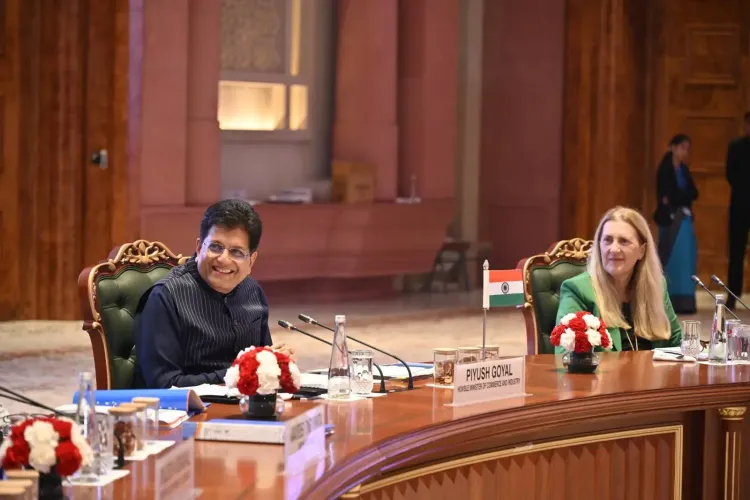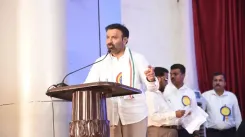What Does the India–EFTA Trade Pact Mean for $100 Billion Investments and 10 Lakh Jobs?

Synopsis
Key Takeaways
- First FTA between India and EFTA countries.
- $100 billion investment commitment.
- Creation of 1 million jobs.
- Focus on sustainable development.
- Enhanced market access for goods and services.
New Delhi, Oct 11 (NationPress) The India–EFTA Trade and Economic Partnership Agreement (TEPA) marks India’s inaugural free trade agreement (FTA) with four advanced European countries, pledging $100 billion in investments and the generation of 1 million direct jobs over the forthcoming 15 years, as per government data released on Saturday.
This agreement augments market access for goods and services, reinforces intellectual property rights, and advocates for sustainable and inclusive growth, while furthering the goals of ‘Make in India’ and ‘Atmanirbhar Bharat’.
The India–European Free Trade Association (EFTA) TEPA took effect on October 1, marking a pivotal step in India’s external trade strategy.
Comprising 14 chapters, the agreement emphasizes crucial areas such as market access for goods, rules of origin, trade facilitation, trade remedies, sanitary and phytosanitary measures, technical barriers to trade, investment promotion, services, intellectual property rights, trade and sustainable development, among other legal and horizontal provisions, according to government sources.
EFTA encompasses 92.2 percent of tariff lines (covering 99.6 percent of India’s exports), while India addresses 82.7 percent (including 95.3 percent of EFTA’s exports), safeguarding essential sectors like dairy, soya, coal, and agriculture.
This pact broadens market access, stimulates manufacturing and innovation, and enhances cooperation in technology and sustainability. Services exports are bolstered through digital delivery, commercial presence, professional mobility, and Mutual Recognition Agreements (MRAs) in fields such as nursing, accounting, and architecture.
The four EFTA nations (Iceland, Liechtenstein, Norway, and Switzerland) have committed to augmenting foreign direct investment (FDI) in India by $50 billion within the initial ten years, followed by an additional $50 billion over the next five years.
Unlike portfolio inflows, these investments are long-term and capacity-building, concentrating on manufacturing, innovation, and research. Over time, they are projected to create one million direct jobs and strengthen ties between India’s skilled workforce and Europe’s technology ecosystems.
To facilitate investment, a dedicated India–EFTA Desk, operational since February 2025, serves as a single-window platform for potential investors, emphasizing renewable energy, life sciences, engineering, and digital transformation, while promoting joint ventures and SME collaborations.
With services contributing over 55 percent to India’s Gross Value Added (GVA), TEPA delivers a platform for next-generation trade in knowledge and digital services.








